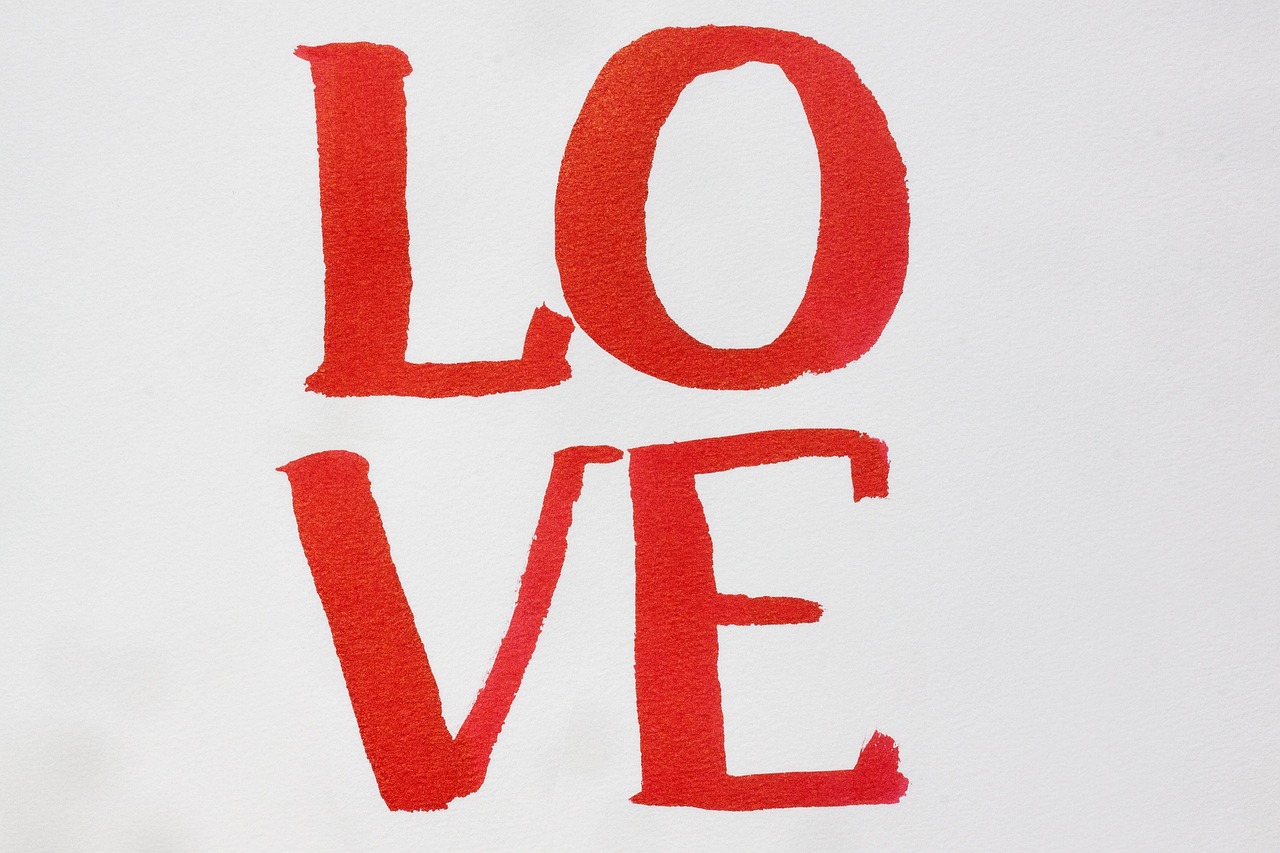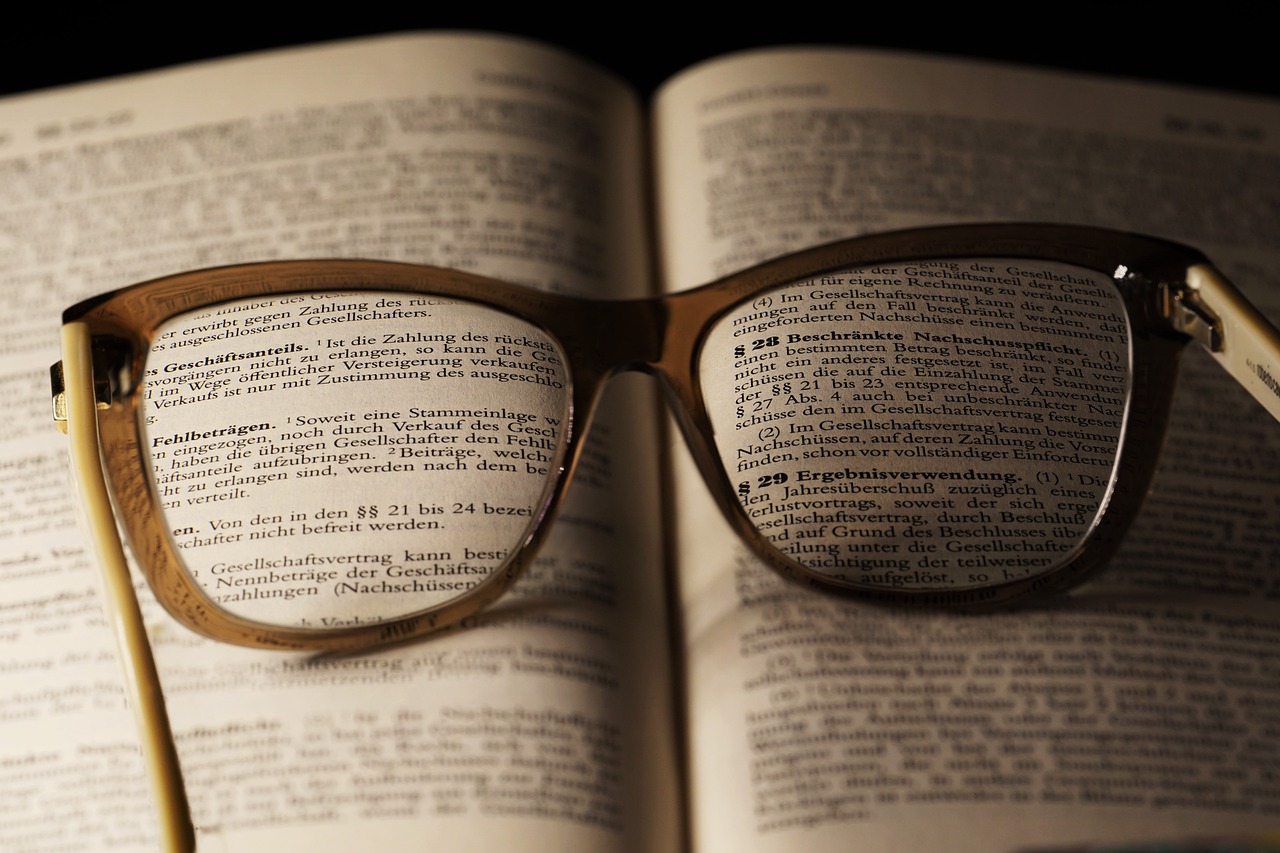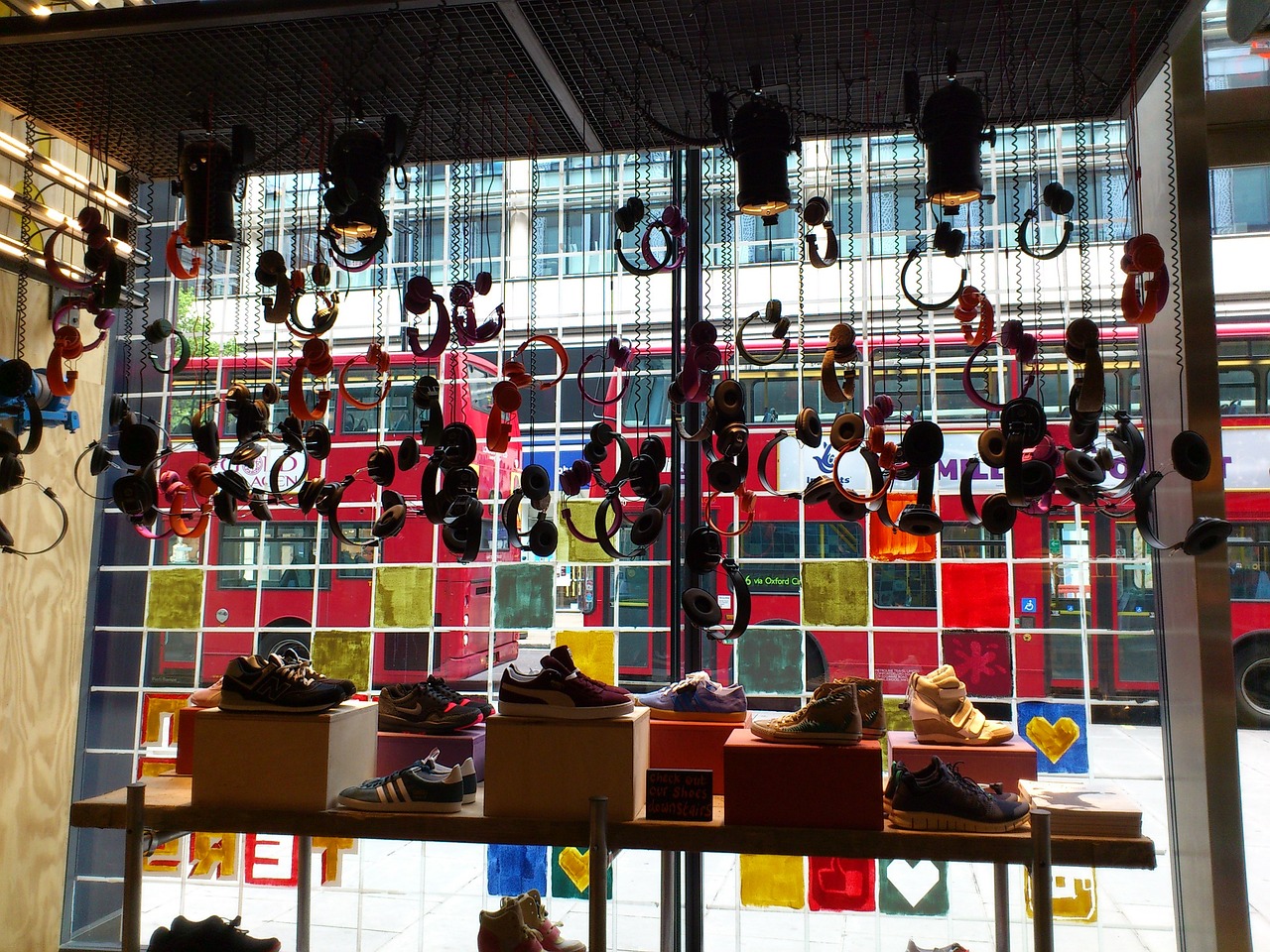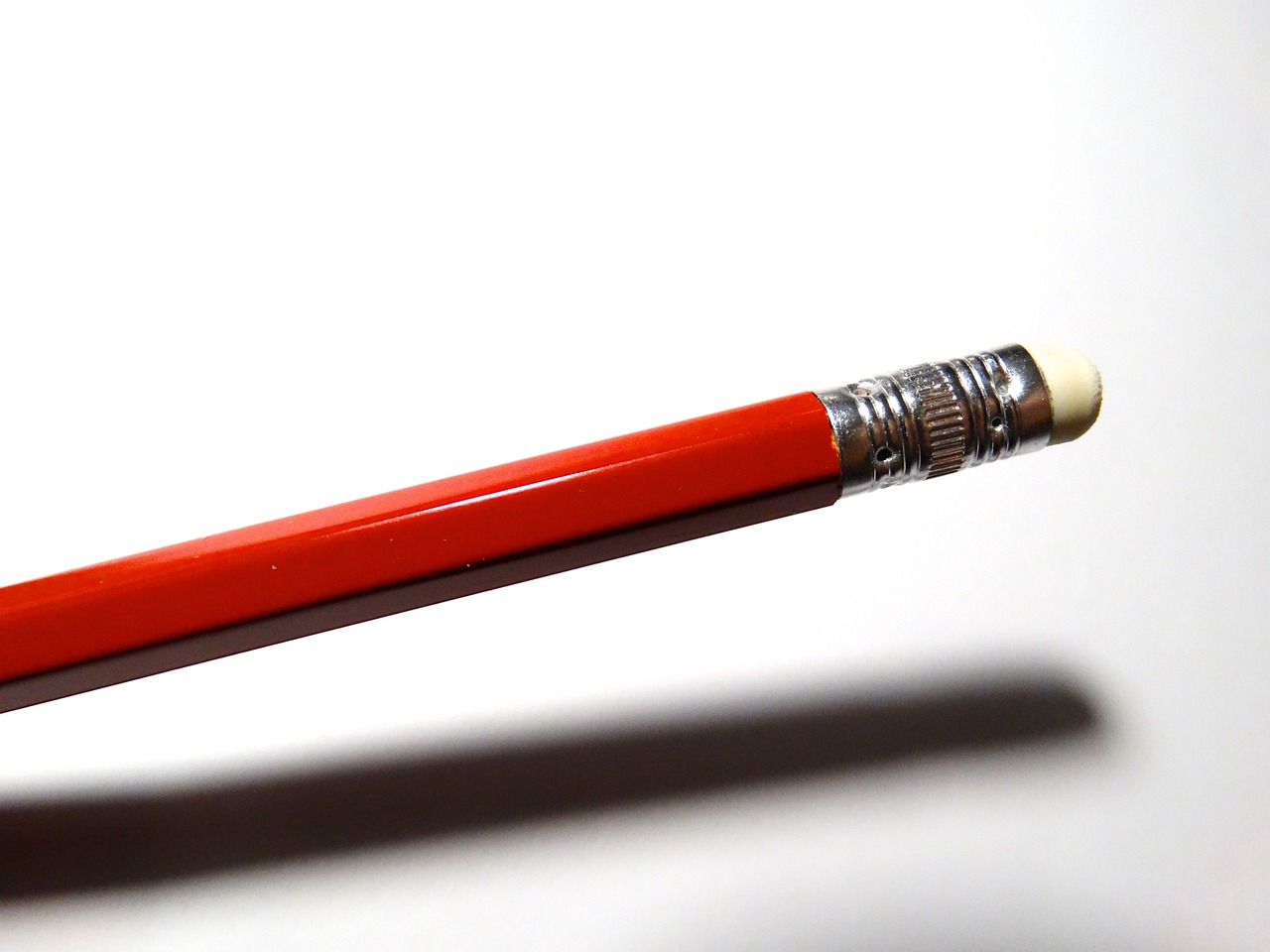Making Your Visual Storytelling Stronger Through Sketching
In today's fast-paced world, where attention spans are shorter than ever, the ability to tell a compelling story visually is more important than it has ever been. Sketching emerges as a crucial skill that allows creators to quickly communicate ideas, emotions, and narratives in a way that words alone often cannot. Imagine trying to describe a breathtaking sunset; words can paint a picture, but a simple sketch captures the essence of that moment in an instant. This article dives deep into the importance of sketching as a tool for visual storytelling, offering insights and techniques to enhance your narrative through effective visual representation.
Sketching serves as a powerful tool for visual storytellers, enabling them to convey complex ideas quickly and effectively. Think of sketching as the bridge between your imagination and your audience's understanding. It’s a way to transform abstract concepts into tangible visuals that can resonate and evoke emotions. When you sketch, you tap into your creativity, allowing your ideas to flow freely. This process not only enhances your creativity but also improves communication with your audience. Instead of getting lost in lengthy explanations, a well-executed sketch can say a thousand words, making your story more relatable and engaging.
Mastering sketching techniques can significantly improve your storytelling skills. From quick sketches that capture fleeting ideas to detailed illustrations that bring narratives to life, the methods you choose can elevate your visual narratives. For instance, consider the difference between a rough doodle and a polished illustration; both have their place, but knowing when to use each can make all the difference. Techniques such as gesture drawing for quick expressions, or storyboarding for planning out scenes, can enhance your storytelling prowess. Below are some techniques that can help you refine your sketching skills:
- Gesture Drawing: Captures the essence of a subject quickly.
- Storyboarding: Helps in visualizing sequences in your narrative.
- Thumbnail Sketches: Quick, small sketches to explore composition and layout.
Good composition is essential for impactful storytelling. It’s not just about what you draw, but how you arrange it on the page. Composition guides the viewer's eye and can evoke specific emotions. Consider the principles of balance, contrast, and focal points as essential tools in your sketching arsenal. By applying these principles, your sketches can tell a story even before they are fully realized. For instance, placing a character off-center can create tension, while symmetry can evoke harmony.
Effective use of space can enhance the viewer's understanding of your narrative. Think of your sketch as a stage; how you position your characters and elements can influence the story being told. Utilizing negative space—the area around and between the subjects of an image—can draw attention to what really matters in your story. When you allow space to breathe, it can create a sense of calm or emphasize action, guiding the audience's focus where you want it most.
Balance and harmony are crucial in visual storytelling. Achieving visual balance in your sketches ensures that all elements work together cohesively. Whether you opt for symmetrical or asymmetrical balance, the goal is to create a pleasing composition that feels complete. Think of it like cooking; just as you need the right amount of spice to enhance a dish without overwhelming it, the same goes for elements in your sketches. Each component should contribute to the overall narrative without stealing the spotlight.
Color and texture play vital roles in enhancing sketches. A well-chosen color palette can evoke specific emotions and set the tone for your story. For instance, warm colors like reds and oranges can create a sense of excitement or urgency, while cool colors like blues and greens can evoke calmness or sadness. Texture adds depth to your sketches, making them more engaging. It can be achieved through various techniques, such as cross-hatching or stippling, to give your drawings a tactile quality that invites viewers to explore your narrative further.
Different mediums require varied approaches to sketching. Whether you're working on a digital platform or traditional paper, adapting your techniques is key to effective storytelling. Digital sketching allows for more flexibility with tools like layers and undo options, while traditional sketching often emphasizes the rawness and authenticity of the medium. Understanding the strengths and limitations of each will help you choose the right approach for your narrative.
With the rise of digital art, understanding the tools available is essential. Popular digital sketching tools like Procreate, Adobe Fresco, and Clip Studio Paint offer unique features that can enhance your storytelling. For example, Procreate’s intuitive interface allows for fluid sketching, while Adobe Fresco’s live brushes mimic traditional media, providing the best of both worlds. Exploring these tools can open new avenues for creativity and expression in your visual storytelling.
Both traditional and digital sketching have their merits. Traditional sketching often provides a tactile experience that many artists cherish, while digital sketching offers convenience and versatility. Knowing when to use each method can lead to optimal storytelling impact. For instance, if you want to capture the spontaneity of an idea, a quick pencil sketch on paper might be the way to go. However, if you’re looking to refine and polish your narrative, digital tools can provide the flexibility you need.
Developing a consistent sketching habit can lead to significant improvements in your storytelling. Just like any other skill, the more you practice, the better you get. Incorporating sketching into your daily routine doesn’t have to be daunting. Start small; dedicate just 10 minutes a day to sketch whatever comes to mind. Over time, you’ll find that your ability to visualize and communicate ideas through sketches improves dramatically.
Setting clear goals can enhance your sketching practice. Define specific, achievable goals to track your progress effectively. For example, aim to complete a certain number of sketches each week or focus on mastering a particular technique. By having tangible objectives, you’ll keep yourself motivated and accountable, making your sketching journey more rewarding.
Inspiration is key to creativity. Explore various sources of inspiration that can fuel your sketching practice and enhance your visual storytelling. Whether it’s nature, photography, or even other artists, immersing yourself in different experiences can spark new ideas. Keep a sketchbook handy to jot down thoughts or quick sketches whenever inspiration strikes; you never know when a great idea will come your way!
- What materials do I need to start sketching? You can start with just a pencil and paper! As you progress, you may want to explore different mediums like markers, watercolors, or digital tools.
- How can I improve my sketching skills? Regular practice is key! Set aside time each day to sketch, experiment with different techniques, and seek feedback from others.
- What if I’m not good at drawing? Remember, sketching is about expressing ideas, not perfection. Embrace the process and focus on improving over time.

The Power of Sketching in Storytelling
Sketching serves as a powerful tool for visual storytellers, enabling them to convey complex ideas quickly and effectively. Imagine being able to express a profound thought or an intricate concept with just a few strokes of a pencil. That’s the magic of sketching! It acts as a bridge between your imagination and your audience, allowing you to communicate emotions, narratives, and ideas that words sometimes fail to capture. When you put pencil to paper, you unlock a world of creativity that can transform mundane stories into captivating visual experiences.
One of the most compelling aspects of sketching is its ability to enhance creativity. When you sketch, you’re not just drawing; you’re exploring possibilities. Each line you draw can lead to new ideas and unexpected connections. This process of exploration is essential for any storyteller. It allows you to break free from conventional thinking and dive into a realm where your imagination can run wild. You might find that a simple doodle evolves into a rich narrative, filled with characters and settings that come alive on the page.
Furthermore, sketching enhances communication. In our fast-paced world, attention spans are shorter than ever. A well-executed sketch can convey a message in an instant, grabbing the viewer's attention and holding it longer than a block of text ever could. Think about it: how many times have you been drawn to a visually appealing image over a lengthy article? Sketches can simplify complex ideas, making them accessible to a wider audience. They serve as visual cues that guide the viewer through your story, highlighting key points and emotions.
To illustrate the power of sketching in storytelling, consider the following benefits:
- Quick Conceptualization: Sketching allows storytellers to quickly visualize ideas, making it easier to iterate and refine concepts.
- Engagement: Visuals naturally attract attention, making it more likely that your audience will engage with your story.
- Memory Retention: People are more likely to remember information presented visually, making sketches a powerful tool for storytelling.
In essence, sketching is not just an art form; it’s a language of its own. It speaks to the viewer in ways that words may not. By integrating sketching into your storytelling toolkit, you empower yourself to create more dynamic and engaging narratives. So, the next time you sit down to craft a story, grab a sketchbook and let your imagination flow. You might be surprised at how a simple sketch can elevate your narrative to new heights!

Techniques for Effective Sketching
When it comes to visual storytelling, sketching techniques can make all the difference. Think of sketching as the foundation of a house; without a solid base, everything else can crumble. Mastering various techniques allows you to express your ideas more clearly and creatively. Whether you’re a seasoned artist or just starting out, there’s always room to improve your skills. So, let’s dive into some effective sketching techniques that can elevate your storytelling game!
One of the most crucial techniques is the practice of quick sketches. These sketches are often done in a matter of minutes and focus on capturing the essence of a scene rather than the intricate details. They serve as a fantastic way to warm up your drawing muscles and get your creative juices flowing. Think of them as a sprint before the marathon of detailed illustrations. By quickly jotting down your ideas, you can explore different compositions and angles without getting bogged down by perfectionism.
Another essential technique is detailed illustrations. While quick sketches help you brainstorm, detailed illustrations allow you to refine and polish your ideas. This is where you can focus on textures, colors, and intricate details that bring your story to life. When you take your time to flesh out these illustrations, you create a narrative that resonates with your audience on a deeper level. Remember, it's the details that often make the biggest impact!
To further enhance your sketching, understanding composition is vital. Good composition is like the secret sauce in a recipe; it ties everything together. Here are a few principles of composition to keep in mind:
- Rule of Thirds: Divide your canvas into thirds, both horizontally and vertically. Place focal points along these lines or at their intersections for a more dynamic composition.
- Leading Lines: Use lines within your sketch to guide the viewer’s eye towards the focal point, creating a natural flow.
- Framing: Use elements within your sketch to frame the main subject, drawing attention and adding depth.
Next, let’s talk about space. The way you use space in your sketches can significantly affect the viewer's understanding. Think of positive space as the main characters in your story and negative space as the silence that enhances their dialogue. By effectively balancing both, you can create a more engaging narrative. For instance, leaving ample negative space around a character can evoke feelings of loneliness or contemplation. On the flip side, cramming too much into a sketch can overwhelm your audience and dilute your message.
Lastly, achieving balance and harmony in your sketches is crucial. Picture a seesaw; if one side is heavier, it tips over. The same goes for your sketches! Ensure that no single element overshadows the rest. You can achieve this by varying the sizes and weights of different elements in your composition. A well-balanced sketch not only looks aesthetically pleasing but also guides the viewer’s eye smoothly through the narrative.
In summary, mastering sketching techniques is about finding the right balance between quick sketches for brainstorming and detailed illustrations for refinement. By understanding composition, effectively utilizing space, and ensuring balance and harmony, you can significantly enhance your visual storytelling. So grab your sketchbook, and let your creativity flow!

Understanding Composition
When it comes to visual storytelling, composition is like the backbone of a great story. Just as a well-structured narrative captivates an audience, a thoughtfully composed sketch can draw viewers in and guide them through your visual tale. Think of composition as the art of arranging elements within your sketch to create a harmonious and engaging experience. It's not just about what you include, but how you position everything on the page. The right composition can evoke emotions, highlight important details, and lead the viewer's eye exactly where you want it to go.
One of the foundational principles of composition is the rule of thirds. Imagine dividing your canvas into a tic-tac-toe grid. By placing key elements along these lines or at their intersections, you can create a more dynamic and interesting visual. It’s a technique that encourages balance and can make your sketches feel more alive. But remember, rules are meant to be broken! While the rule of thirds is a great starting point, don't hesitate to experiment and find what works best for your unique style.
Another important aspect of composition is focal points. Every great story has a climax, and in your sketch, a focal point serves a similar purpose. This is the area that you want to draw the viewer's attention to first. You can create a focal point through contrast, color, or size. For instance, if you have a busy background, consider making your main subject larger or using a vibrant color to make it pop. This not only captures attention but also helps convey the main message of your visual narrative.
Additionally, the concept of leading lines can be a game-changer in your sketches. These are lines that guide the viewer's eye through the artwork, creating a sense of movement and flow. They can be literal lines, like roads or rivers, or implied lines created by the arrangement of elements. By incorporating leading lines, you can create a journey for your audience, taking them from one part of the sketch to another, much like a storyteller guiding their listeners through a plot.
It’s also crucial to consider the balance of your composition. Balance can be achieved through symmetry, where elements are evenly distributed, or asymmetry, where different elements create a sense of equilibrium despite being unevenly distributed. Think of it like a seesaw; both sides need to feel right for the viewer to feel comfortable. A well-balanced composition allows the viewer to take in the entire sketch without feeling overwhelmed or lost.
Lastly, don't forget about negative space. This is the area around and between the subjects of your sketch. Utilizing negative space effectively can enhance the overall composition, allowing your main subjects to stand out more. It's like breathing room in your artwork, giving the viewer's eyes a place to rest and making the overall piece feel more complete.
In summary, understanding composition is essential for effective visual storytelling. By mastering elements like the rule of thirds, focal points, leading lines, balance, and negative space, you can elevate your sketches from simple illustrations to powerful narratives that resonate with your audience. So grab your sketchbook, start experimenting with these techniques, and watch your storytelling skills flourish!
- What is the rule of thirds in composition?
The rule of thirds involves dividing your canvas into a grid of nine equal sections and placing important elements along these lines or at their intersections to create a more balanced and engaging composition. - How can I create a focal point in my sketches?
You can create a focal point by using contrast, color, or size to draw attention to a specific area in your sketch, making it the first thing viewers notice. - What are leading lines and how do they work?
Leading lines are lines that guide the viewer's eye through the artwork, creating a sense of movement and helping to lead them towards the focal point. - What is negative space and why is it important?
Negative space is the area around and between subjects in a sketch. It helps to enhance the composition by providing breathing room and allowing the main subjects to stand out more clearly.

Using Space Wisely
When it comes to sketching, the way you utilize space can dramatically influence the viewer's perception and understanding of your narrative. Think of space as the canvas of your storytelling; it can either enhance your message or muddle it. The effective use of both negative and positive space is crucial in guiding your audience's focus and ensuring that your sketches communicate clearly.
Negative space refers to the areas surrounding the main subjects in your sketch. It’s the empty space that can create a sense of balance and help to highlight the focal points of your story. For instance, if you’re sketching a bustling marketplace, the spaces between the stalls and the people can evoke feelings of chaos or tranquility, depending on how you choose to portray them. By intentionally leaving some areas blank, you can create a breathing room that allows the viewer's eye to rest and absorb the important details.
On the other hand, positive space is where the action happens. It’s where you place your characters, objects, and elements that drive your narrative forward. However, cramming too much into the positive space can lead to confusion. To avoid this, consider the following strategies:
- Establish Focal Points: Make sure there’s a clear subject that draws the viewer’s eye. This could be a character's expression or a significant object that represents your story's theme.
- Utilize Lines and Shapes: Use lines to direct the viewer’s gaze. Curved lines can lead the eye in a gentle manner, while sharp angles can create tension or urgency.
- Maintain Consistency: Keep your style and elements consistent throughout the sketch. This creates a cohesive look that helps the viewer understand the relationship between different components.
Moreover, creating a sense of depth through layering can also enhance your storytelling. By overlapping elements and varying the sizes of objects, you can create a three-dimensional effect that pulls the viewer into your scene. For example, in a landscape sketch, placing larger trees in the foreground while making distant mountains smaller can create an illusion of depth and perspective.
Ultimately, mastering the art of using space wisely in your sketches can lead to a more compelling visual narrative. It’s all about finding the right balance between what to show and what to leave out. As you practice, pay attention to how different arrangements of space affect the mood and clarity of your sketches. Over time, you will develop an intuitive understanding of how to manipulate space to serve your storytelling needs.
Q: What is negative space and why is it important?
A: Negative space is the area around and between the subjects of an image. It is important because it can create balance, emphasize the main subject, and guide the viewer's focus within your sketch.
Q: How can I improve my use of space in sketches?
A: Practice by creating sketches with intentional empty areas, experiment with different compositions, and analyze how space affects the overall impact of your work. Studying the work of other artists can also provide valuable insights.
Q: Is it better to have more positive space or negative space?
A: It depends on the message you want to convey. A balance of both is usually the best approach. Too much positive space can overwhelm the viewer, while too much negative space can make the sketch feel empty and unengaging.

Creating Balance and Harmony
When it comes to visual storytelling, balance and harmony are not just artistic concepts; they are essential ingredients that can make or break your narrative. Imagine walking into a gallery where every piece of art feels unbalanced—your eyes dart around, struggling to find a focal point, and ultimately, you leave feeling unsatisfied. In the same way, a sketch that lacks balance can confuse your audience, detracting from the story you aim to tell. So, how do we achieve this balance?
First off, let's talk about the elements of balance. In sketching, balance can be categorized into two types: symmetrical and asymmetrical. Symmetrical balance is when elements are evenly distributed around a central axis, creating a sense of order and stability. On the other hand, asymmetrical balance involves different elements that carry equal visual weight but are arranged differently. This can create a more dynamic and interesting composition. Think of it like a seesaw; when one side is heavier, it tips, but when balanced, it provides a smooth ride.
Next, consider the concept of harmony. Harmony in your sketches means that all elements work together cohesively to convey a unified message. This can be achieved through the strategic use of color, shapes, and lines. For example, if you're sketching a serene landscape, using soft colors and gentle lines can evoke a sense of calm and tranquility. In contrast, sharp angles and bold colors might create tension and excitement. It’s all about the emotional response you want to evoke from your audience.
To illustrate these principles, let’s look at a simple table that breaks down how to achieve balance and harmony in your sketches:
| Principle | Description | Example |
|---|---|---|
| Symmetrical Balance | Even distribution of visual elements | Two trees on either side of a pond |
| Asymmetrical Balance | Different elements that carry equal visual weight | A large rock balanced by several smaller stones |
| Color Harmony | Using colors that complement each other | Blue and orange in a sunset scene |
| Shape Harmony | Using similar shapes to create a cohesive look | Circles and curves in a whimsical design |
Incorporating these principles into your sketches will not only enhance their visual appeal but also improve the storytelling aspect. Remember, a well-balanced sketch guides the viewer’s eye smoothly across the composition, allowing them to absorb the narrative without distraction. It's like a well-tuned orchestra, where each instrument plays its part in harmony, creating a beautiful symphony that resonates with the audience.
So, as you sketch, take a moment to evaluate the balance and harmony of your composition. Are the elements working together? Is there a focal point that draws the viewer in? By being mindful of these aspects, you can significantly elevate your visual storytelling game.
- What is the difference between balance and harmony in sketching?
Balance refers to the distribution of visual weight in a composition, while harmony is about how well the elements work together to create a unified message. - Can I use both symmetrical and asymmetrical balance in the same sketch?
Absolutely! Combining both types can create a more dynamic and engaging composition. - How do colors affect balance and harmony?
Colors can influence the emotional weight of your elements. Harmonious colors can enhance the overall unity of your sketch, while contrasting colors can create focal points.

Incorporating Color and Texture
When it comes to visual storytelling, color and texture are your best friends. They have the power to evoke emotions, set the mood, and guide the viewer's eye through your narrative. Think of color as the emotional language of your sketches—just like a well-chosen soundtrack can elevate a film, the right colors can amplify the impact of your story. Imagine drawing a serene landscape; using soft blues and greens can create a sense of calm, while fiery reds and oranges can evoke tension or excitement. The emotional response to color is universal, making it a crucial element in your visual toolkit.
Texture, on the other hand, adds depth and dimension to your sketches. It's like the icing on the cake—while the cake itself (your basic drawing) is important, the icing (texture) makes it visually appealing and engaging. For instance, incorporating rough textures in a sketch of a rugged mountain can enhance the viewer's experience, making them feel the harshness of the environment. Similarly, smooth textures can convey softness, as in a fluffy cloud or a gentle wave. By thoughtfully applying texture, you can create a more immersive experience for your audience.
To effectively incorporate color and texture into your sketches, consider the following techniques:
- Color Palettes: Choose a limited color palette that aligns with your story. This can create unity and consistency throughout your visuals.
- Layering Techniques: Use layering to build texture. Start with a base color and gradually add layers of different hues and patterns to create depth.
- Contrast: Utilize contrasting colors and textures to draw attention to key elements in your sketch. This can help highlight important aspects of your narrative.
Here’s a simple table to illustrate how different colors can evoke various emotions:
| Color | Emotion |
|---|---|
| Red | Passion, Energy |
| Blue | Calm, Trust |
| Green | Growth, Harmony |
| Yellow | Happiness, Optimism |
| Purple | Creativity, Mystery |
In conclusion, the incorporation of color and texture in your sketches is not merely an artistic choice; it’s a storytelling strategy. By mastering these elements, you can transform a simple sketch into a powerful visual narrative that resonates with your audience on multiple levels. So, the next time you pick up your pencil, remember: it's not just about what you draw, but how you bring it to life with color and texture.
Q: How do I choose the right colors for my sketches?
A: Start by considering the emotions you want to convey. Use color theory to understand how different colors interact and what feelings they evoke.
Q: Can I use texture in digital sketches?
A: Absolutely! Digital tools often have features that allow you to add texture easily, such as brushes and overlays that mimic traditional textures.
Q: What if I'm not confident in my color choices?
A: Practice makes perfect! Experiment with different palettes and seek feedback from fellow artists. Over time, you'll develop an instinct for color.

Sketching for Different Mediums
When it comes to sketching, one size definitely does not fit all. Each medium brings its unique characteristics, challenges, and opportunities that can greatly influence your visual storytelling. Whether you're working with traditional materials like pencil and paper or diving into the digital realm, understanding the nuances of each medium can elevate your sketches from simple drawings to powerful narratives.
For instance, traditional sketching often allows for a tactile experience that many artists cherish. The feel of the pencil gliding over paper can spark creativity in ways that digital tools sometimes can't replicate. Traditional mediums such as charcoal, ink, and watercolor each offer different textures and effects, allowing artists to convey emotions and themes in distinct ways. However, traditional sketching can also be limiting in terms of editing and flexibility. Once you've made a mark, it’s there to stay, which can be both a blessing and a curse.
On the other hand, digital sketching has revolutionized the way artists create. With a plethora of tools and software available, digital sketching allows for endless experimentation. You can easily undo mistakes, layer elements, and manipulate colors with just a few clicks. Programs like Adobe Photoshop, Procreate, and Corel Painter have become staples for many visual storytellers, providing features that can enhance your storytelling through dynamic animations and interactive elements. Yet, the challenge lies in mastering these tools and ensuring that the digital medium doesn't overshadow the essence of your creative vision.
To help you navigate the differences between these mediums, here’s a quick comparison:
| Aspect | Traditional Sketching | Digital Sketching |
|---|---|---|
| Tactile Experience | High - Physical interaction with materials | Low - Interaction through a screen |
| Editability | Limited - Once it's on paper, it's hard to change | High - Easy to undo and modify |
| Tools | Pencil, ink, charcoal, watercolor | Stylus, tablet, software applications |
| Learning Curve | Can be easier for beginners | Requires tech-savvy skills |
Ultimately, the choice between traditional and digital sketching boils down to your personal preferences and the specific needs of your project. Many artists find a hybrid approach works best, using traditional sketches as a foundation before refining their work digitally. This method allows for the best of both worlds, combining the raw, organic feel of hand-drawn art with the precision and flexibility of digital tools.
So, whether you’re doodling in a sketchbook or creating intricate designs on your tablet, the key is to embrace the medium that resonates with you and suits your storytelling goals. Experiment with both, and you might just discover new ways to express your creativity and enhance your visual narratives.
- What medium is best for beginners? Traditional sketching with pencils and paper is often recommended for beginners due to its simplicity and accessibility.
- Can I combine traditional and digital sketching? Absolutely! Many artists use traditional sketches as a base and enhance them digitally.
- What tools should I use for digital sketching? Popular tools include tablets like the iPad with Procreate, or graphic tablets with software like Adobe Photoshop.

Digital Sketching Tools
In today's digital age, the realm of sketching has expanded beyond traditional pencil and paper, opening up a world filled with innovative that cater to various artistic needs. These tools not only offer convenience but also enhance the creative process, allowing artists to explore their ideas with unprecedented flexibility. Whether you're a seasoned professional or a budding artist, understanding the available tools can significantly elevate your visual storytelling.
One of the most popular digital sketching tools is the graphics tablet. Devices like the Wacom Intuos or Huion tablets provide a natural drawing experience, translating your hand movements into digital strokes with impressive accuracy. These tablets often come bundled with software that offers a variety of brushes and effects, enabling artists to experiment freely. But wait, there's more! If you're looking for something more portable, consider a tablet with a stylus, such as the iPad Pro paired with the Apple Pencil. This combination allows for seamless sketching on the go, and with apps like Procreate or Adobe Fresco, the possibilities are endless.
Another essential tool in your arsenal could be digital sketching software. Programs like Adobe Illustrator and CorelDRAW are fantastic for creating vector graphics, while Photoshop excels in raster graphics. Each software has its unique features and strengths, making them suitable for different styles of sketching. For instance, if you're into detailed illustrations, Photoshop's brush engine can help you create stunning textures and depth, while Illustrator’s vector capabilities are perfect for clean, scalable designs.
Moreover, many artists are finding great success with mobile apps that cater to sketching. Applications like Autodesk SketchBook and ArtRage provide powerful tools right at your fingertips, making it easier to sketch whenever inspiration strikes. These apps often come equipped with features such as layering, blending modes, and customizable brushes, allowing for a comprehensive sketching experience without the need for bulky equipment.
To give you a clearer picture, here's a quick comparison of some popular digital sketching tools:
| Tool | Type | Best For |
|---|---|---|
| Wacom Intuos | Graphics Tablet | Detailed Illustrations |
| iPad Pro + Apple Pencil | Tablet | Portability & Versatility |
| Adobe Photoshop | Software | Raster Graphics & Textures |
| Adobe Illustrator | Software | Vector Graphics |
| Autodesk SketchBook | Mobile App | Quick Sketching |
In conclusion, the world of digital sketching tools is vast and varied, each offering unique features that can enhance your storytelling capabilities. By exploring these tools, you can find the right fit for your style and needs, ultimately enriching your visual narratives. Remember, the best tool is the one that resonates with your creative process and helps you express your ideas more effectively. So, dive in and start sketching your stories today!
- What is the best digital sketching tool for beginners?
For beginners, a simple graphics tablet like the Wacom Intuos combined with software like Autodesk SketchBook is ideal. It offers a gentle learning curve while still being powerful enough for more advanced techniques. - Can I use my smartphone for digital sketching?
Absolutely! Many mobile apps are designed specifically for sketching on smartphones, such as Procreate Pocket and Adobe Fresco, making it easy to sketch on the go. - Do I need expensive equipment to start digital sketching?
No, you don’t need to break the bank. There are affordable tablets and apps available that can help you get started without a hefty investment.

Traditional vs. Digital Sketching
When it comes to sketching, the debate between traditional and digital methods often sparks passionate discussions among artists and storytellers alike. Each approach has its own unique set of advantages and challenges, making the choice largely dependent on personal preference and the specific needs of a project. Traditional sketching, which involves using physical materials such as pencils, pens, and paper, offers a tactile experience that many artists cherish. The feel of the pencil gliding across the paper can inspire creativity in ways that digital tools sometimes cannot replicate. The beauty of traditional sketches lies in their imperfections—each stroke tells a story, and the texture of the paper adds depth to the artwork.
On the other hand, digital sketching has revolutionized the way we create art and tell stories. With an array of software and tools at their disposal, artists can manipulate their sketches with incredible precision. Digital platforms allow for easy corrections, layering, and the ability to experiment with colors and textures without the fear of ruining a piece. Moreover, the convenience of having a vast library of brushes and effects at your fingertips can significantly enhance the creative process. Digital sketching also facilitates sharing and collaboration, making it easier to connect with others and showcase work online.
To help you understand the key differences between traditional and digital sketching, here’s a comparative table:
| Aspect | Traditional Sketching | Digital Sketching |
|---|---|---|
| Materials | Paper, pencils, inks, etc. | Graphic tablets, software (e.g., Photoshop, Procreate) |
| Experience | Tactile and hands-on | Fast and flexible |
| Corrections | Difficult to erase or modify | Easy to undo, layer, and edit |
| Sharing | Physical copies or scanning required | Instant sharing online |
| Cost | Initial investment in materials | Software and hardware costs |
Ultimately, the choice between traditional and digital sketching boils down to what resonates with you as an artist. Some may prefer the authenticity and warmth of traditional sketches, while others may lean towards the versatility and efficiency of digital tools. In many cases, artists find a way to blend both methods, utilizing the strengths of each to enhance their storytelling capabilities. So, whether you’re doodling in a sketchbook or tapping away at a tablet, remember that your unique style and voice are what truly matter in the world of visual storytelling.
- Which method is better for beginners? It really depends on your comfort level. Traditional sketching can help you develop foundational skills, while digital sketching can offer more immediate feedback and tools.
- Can I combine both methods? Absolutely! Many artists use traditional sketches as a base and then enhance them digitally.
- What tools do I need for digital sketching? A graphic tablet and software like Photoshop or Procreate are popular choices.

Building a Sketching Habit
Building a sketching habit is akin to nurturing a plant; it requires consistency, care, and the right environment to flourish. Just like a plant thrives with regular watering and sunlight, your sketching practice demands dedication and regularity to see meaningful growth. So, how can you transform sketching from a sporadic activity into a daily ritual that enhances your visual storytelling? Let’s dive into some effective strategies that can help you cultivate this habit.
First and foremost, setting clear goals is crucial. Think of your sketching goals as a roadmap guiding you toward improvement. Whether you want to sketch a certain number of times per week or focus on mastering specific techniques, having defined objectives can keep you motivated. For instance, you might set a goal to create one sketch every day for a month. This commitment not only builds your skills but also instills a sense of accomplishment as you track your progress.
Another important aspect of building a sketching habit is creating a conducive environment. Just like a workspace can affect productivity, your sketching space can influence your creativity. Dedicate a specific area in your home or office for sketching, equipped with all the materials you need. This space should be inviting and inspiring, filled with tools that spark your creativity—be it sketchbooks, pencils, or digital devices. When you have a designated spot, it becomes easier to slip into the sketching mindset.
Moreover, finding inspiration is key to keeping your sketching practice fresh and exciting. Inspiration can come from various sources, such as nature, art, or even everyday life. Consider keeping an inspiration journal where you jot down ideas, images, or quotes that resonate with you. This journal can serve as a wellspring of creativity when you sit down to sketch. Additionally, engaging with other artists through social media or local art groups can provide new perspectives and ignite your passion for sketching.
To make sketching a part of your daily routine, try integrating it into your existing activities. For example, you could carry a small sketchbook with you and dedicate a few minutes during your lunch break or commute to sketch something that catches your eye. This practice not only makes sketching more accessible but also allows you to observe the world around you with a creative lens. Over time, these small moments of sketching can accumulate into a rich portfolio of work.
Lastly, don't forget to celebrate your progress. Just as you would celebrate milestones in other areas of your life, acknowledging your growth in sketching can boost your motivation. Set aside time to review your sketches periodically and reflect on how far you’ve come. You might even consider sharing your work with friends or on social media to receive feedback and encouragement, which can further fuel your passion for sketching.
In conclusion, building a sketching habit involves setting goals, creating a supportive environment, finding inspiration, incorporating sketching into your daily life, and celebrating your progress. By following these strategies, you can transform sketching into a fulfilling and integral part of your visual storytelling journey. Remember, just like any skill, the more you practice, the better you’ll become. So grab your sketchbook and start creating!
- How long should I spend sketching each day? - Aim for at least 15 to 30 minutes daily, but even a few minutes can be beneficial.
- What materials do I need to start sketching? - A simple sketchbook and a pencil or pen are enough to get started. As you progress, you can explore various tools.
- Can sketching help improve my overall drawing skills? - Absolutely! Regular sketching enhances your observation skills and helps you understand shapes, proportions, and perspectives better.
- Where can I find inspiration for my sketches? - Inspiration can be found everywhere—nature, art, daily life, and even online platforms like Pinterest or Instagram.

Setting Goals for Sketching Practice
Setting goals for your sketching practice is like laying a solid foundation for a house; without it, everything else can feel shaky and uncertain. When you take the time to define what you want to achieve, you create a roadmap that guides your creative journey. Start by asking yourself: What do I want to improve? Is it my speed, my understanding of anatomy, or perhaps my ability to convey emotion through sketches? These questions will help you pinpoint your focus areas and set specific, measurable goals.
One effective approach is to break down your goals into smaller, manageable chunks. For instance, instead of saying, "I want to get better at sketching," you might set a goal like, "I will practice drawing human figures for 30 minutes every day this week." This specificity not only makes your goal more achievable, but it also allows you to track your progress effectively. You could even create a simple table to monitor your daily practice:
| Date | Focus Area | Time Spent (minutes) | Notes |
|---|---|---|---|
| 01/01/2024 | Human Figures | 30 | Felt more comfortable with proportions |
| 01/02/2024 | Landscapes | 45 | Struggled with perspective |
| 01/03/2024 | Animals | 30 | Need to work on fur textures |
Moreover, consider incorporating both short-term and long-term goals into your practice. Short-term goals can be daily or weekly objectives that keep your momentum going, while long-term goals might focus on broader achievements, such as completing a sketchbook or preparing for an art exhibition. This dual approach not only keeps you motivated but also allows for a sense of accomplishment at various stages of your journey.
Don’t forget to regularly review your goals. Life can change, and so can your interests. If you find that a certain area of sketching no longer excites you, it’s perfectly okay to pivot. The key is to remain flexible and open to new ideas. Reflect on what you’ve learned and how you can apply that knowledge to your next set of goals. This ongoing process of setting, reviewing, and adjusting your goals will not only enhance your skills but also keep your passion for sketching alive.
In conclusion, setting goals for your sketching practice is an essential step in becoming a more proficient visual storyteller. By being specific, breaking down your objectives, and regularly reviewing your progress, you create a structured yet flexible approach to your artistic development. Remember, every stroke of your pencil brings you closer to your goals, so embrace the journey!
- How often should I sketch to improve? Consistency is key! Aim for daily sketching, even if it's just for a few minutes.
- What if I don't know what goals to set? Start by assessing your current skills and identifying areas where you feel less confident.
- Can I change my goals mid-way through my practice? Absolutely! Adaptability is important in the creative process.
- Should I share my sketches with others? Sharing can provide valuable feedback and encouragement, so don't hesitate to do so!

Finding Inspiration
Inspiration is like the spark that ignites creativity; without it, your sketching can feel flat and uninspired. So, how do you find that elusive muse? The truth is, inspiration can be found in the most unexpected places! It's crucial to keep your eyes and mind open to the world around you. Think of inspiration as a treasure hunt—sometimes, you just need to look in the right spots. Here are some effective ways to uncover inspiration for your sketches:
First, immerse yourself in nature. There’s something inherently beautiful about the colors, shapes, and textures found outdoors. Whether you’re strolling through a park or hiking in the mountains, take a moment to observe the details. Notice how the light hits the leaves, the way shadows dance on the ground, or the intricate patterns on a flower petal. These elements can translate beautifully into your sketches, adding depth and life to your visual stories.
Another fantastic source of inspiration is art and literature. Dive into books, paintings, or even films that resonate with you. Analyze the storytelling techniques used by your favorite authors or artists. What emotions do their works evoke? How do they use color and composition? By studying their methods, you can incorporate similar elements into your own sketches. You might even consider creating a mood board with quotes, images, and themes that inspire you.
Additionally, engaging with other artists can be a game-changer. Join local art groups or online communities where you can share your work and receive feedback. The exchange of ideas can spark new concepts and encourage you to experiment with different styles. Remember, collaboration often leads to innovation!
Lastly, don’t underestimate the power of everyday life. Your daily experiences are a goldmine for inspiration. Keep a sketchbook handy and jot down observations, thoughts, or even doodles that come to mind throughout your day. Whether it’s a quirky interaction at a café or the way light filters through your window, these moments can serve as the foundation for your next big project.
In summary, finding inspiration is about being curious and open-minded. By exploring nature, studying art, engaging with fellow artists, and capturing everyday moments, you can fuel your creativity and enhance your sketching practice. Remember, inspiration is everywhere; you just have to look for it!
- How can I overcome a creative block?
Take a break, try new activities, or change your environment. Sometimes stepping away can help clear your mind.
- What should I do if I feel my sketches aren't improving?
Practice consistently, seek feedback, and study the work of artists you admire. Improvement takes time and persistence.
- How often should I sketch to see improvement?
Try to sketch daily, even if it's just for a few minutes. Consistency is key to developing your skills.
Frequently Asked Questions
- Why is sketching important for visual storytelling?
Sketching is crucial for visual storytelling because it allows you to quickly convey complex ideas and emotions. It's like having a visual language that can express thoughts faster than words. By sketching, you can capture the essence of your story and communicate it effectively to your audience.
- What techniques can improve my sketching skills?
To enhance your sketching skills, practice techniques such as quick sketches for capturing ideas rapidly, and detailed illustrations for depth. Experimenting with different styles and methods can also help you find what works best for your storytelling. Remember, the more you sketch, the better you'll become!
- How can I create better composition in my sketches?
Good composition is all about the arrangement of elements within your sketch. Use principles like the rule of thirds, balance, and focal points to guide the viewer's eye. Think of your sketch as a stage where each element plays a role; ensuring they work together harmoniously will enhance your storytelling.
- What is the role of color and texture in sketching?
Color and texture add depth and emotion to your sketches. Color can evoke feelings and set the mood, while texture can provide a sense of realism or stylization. By thoughtfully choosing your color palette and incorporating different textures, you can elevate your visual narrative significantly.
- How do I adapt my sketching for different mediums?
Each medium, whether digital or traditional, requires a unique approach. For instance, digital sketching allows for easy edits and layering, while traditional sketching often emphasizes texture and physicality. Understanding the strengths of each medium will help you choose the right one for your story.
- What tools are best for digital sketching?
Popular digital sketching tools include software like Procreate, Adobe Fresco, and Clip Studio Paint. These tools offer various features such as brush customization and layering, which can enhance your storytelling capabilities. Explore different options to see which one suits your style best!
- How can I develop a consistent sketching habit?
Building a sketching habit starts with setting achievable goals and scheduling regular practice time. Treat sketching like a workout for your creativity—consistency is key! Even a few minutes each day can lead to significant improvement over time.
- Where can I find inspiration for my sketches?
Inspiration can come from anywhere! Observe your surroundings, browse art online, or dive into books and movies. Nature, everyday life, and even your emotions can spark ideas. Keep a sketchbook handy to jot down thoughts and inspirations as they come!



















